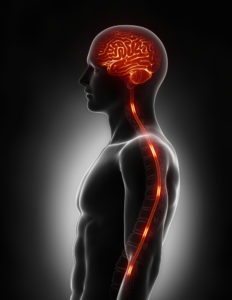“Healing doesn’t mean that the pain never existed. It means the damage no longer controls the lives.” – Unknown
Chronic pain can range in severity from being an aggravating annoyance to being crippling and debilitating.
More than 1.5 billion people around the world have chronic pain and it is the most common cause of long-term disability in the United States, according to the American Academy of Pain Medicine, and affects about 100 million Americans.
And one of the frustrating aspects of chronic pain is the often difficult task of determining the cause in order to facilitate some form of treatment.
What is Chronic Pain? A Clinical Perspective
The National Institutes of Health (NIH) offers this description of chronic pain,
“While acute pain is a normal sensation triggered in the nervous system to alert you to possible injury and the need to take care of yourself, chronic pain is different. Chronic pain persists. Pain signals keep firing in the nervous system for weeks, months, even years. There may have been an initial mishap — sprained back, serious infection, or there may be an ongoing cause of pain — arthritis, cancer, ear infection, but some people suffer chronic pain in the absence of any past injury or evidence of body damage. Many chronic pain conditions affect older adults.”
Other sources define chronic pain as pain that lasts at least 12 weeks. It may be sharp or dull pain that causes a burning or aching sensation in the affected areas. It may be a steady pain or intermittent – pain that comes and goes without any apparent reason.
In addition, chronic pain can occur in nearly any part of your body and feel different in the various affected areas.
According to Healthline.com some of the most common types of chronic pain include:
- headache
- postsurgical pain
- post-trauma pain
- lower back pain
- cancer pain
- arthritis pain
- neurogenic pain (pain caused by nerve damage)
- psychogenic pain (pain that isn’t caused by disease, injury, or nerve damage)
Common chronic pain issues have been defined by the National Institute of Neurological Disorders and Stroke (NINDS),
“Common chronic pain complaints include headache, low back pain, cancer pain, arthritis pain, neurogenic pain (pain resulting from damage to the peripheral nerves or to the central nervous system itself), psychogenic pain (pain not due to past disease or injury or any visible sign of damage inside or outside the nervous system).
A person may have two or more co-existing chronic pain conditions. Such conditions can include chronic fatigue syndrome, endometriosis, fibromyalgia, inflammatory bowel disease, interstitial cystitis, temporomandibular joint dysfunction, and vulvodynia. It is not known whether these disorders share a common cause.”
Addressing Common Chronic Pain Types
While there can indeed be several causes or combinations of causes, for chronic pain, for that vast majority of people who suffer, their chronic pain usually falls under one of four types:
Chronic Back Pain
Research from the University of North Carolina at Chapel Hill found that almost 85 percent of adults in the U.S. will experience chronic back pain at some point. Mostly occurring in the lower back, the pain may be caused by an injury or will develop over time because of arthritis, osteoporosis, or normal wear and tear.
 Chronic Headaches
Chronic Headaches
About 50 percent of the adults in America will report headaches during the course of a year, according to research, while more than 90 percent will report a history of chronic headaches. A chronic headache is one that occurs for at least 15 days per month for no less than three consecutive months.
Chronic Joint Pain
Typically caused by injury, infection, or advancing age, joint pain is one of the leading types of chronic pain among adults in the U.S. Arthritis is the most common cause, according to a report from the U.S. Bone and Joint Initiative, and affects over 51 million Americans, or about one of every two adults.
 Chronic Nerve Pain
Chronic Nerve Pain
Chronic nerve or neuropathic pain affects about 10 percent of all Americans, according to a study from the Mayo Clinic School of Medicine. This commonly happens when the nerves are either compressed, damaged, or exposed to drugs that strip their protective exterior coating, which is called the myelin sheath.
Fortunately, there are proven approaches for easing and even eliminating chronic pain in many instances, among these being Active Release Technique® therapy. An effective and hands-on therapy, Active Release Technique®, or ART®, works deep within the body’s soft tissues to reduce pain resulting from injury or overuse.
Soft tissue conditions often do not show up in imaging studies. When soft tissue has been injured, for example, or even repeatedly overused, it can form scar tissue. While this is a natural result of the healing process, scar tissue may sometimes adhere to adjacent soft tissue structures resulting in a restricted range of motion and may even cause compression of nerves or blood vessels.
By locating and gradually breaking up these adhesions and other abnormal tissues, headaches, back pain, carpal tunnel syndrome, shin splints, shoulder pain, sciatica, plantar fasciitis, knee problems, and tennis elbow are just a few of the chronic pain issues that can be relieved with ART®.
Finding Pain Relief Requires a First Step
Regardless of our health and level of physical fitness, we can suffer from recurring or chronic pain. And the first step in finding relief from the pain – and eventually being pain-free – is when we get to know you and your pain issues.
Once you make your first appointment with Pain and Performance Solutions, we’ll sit down with you and learn about your present discomfort as well as any history of pain.
After providing you with a full examination, we can then determine the best form of treatment that will help you along your road to recovery.
Often, when pain occurs, our bodies will try to compensate for the pain in order to allow us to get through the day with less pain. However, because our bodies have shifted that pain around to compensate for our discomfort, this often leads to other areas of pain.
Getting chronic pain relief with therapies such as Active Release Technique® and Anatomy in Motion can only begin when we can understand where your pain started. That could mean it started previously with another injury you might have sustained.
Your trust in us and your transparency is key. Getting your body to work properly and healthy is the only way to achieve total recovery. So, don’t hesitate to reach out. We are here to help and will answer any, and all questions that you may have.
You can reach us at (707) 636-4404 or by filling out our online contact form.
